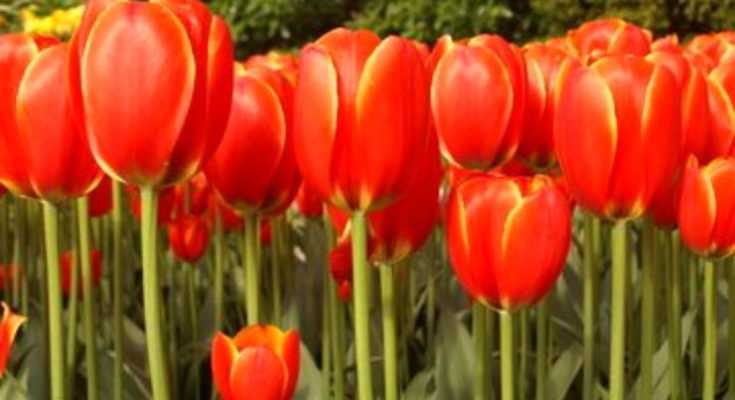Spring Bulbs to Plant in the Fall

While the spring months are most commonly associated with planting seeds and seedlings that will produce beautiful blooms a few weeks later, the autumn months offer a second opportunity for planting many bloom-producing bulbs. Planting bulbs in the fall can give those flowers an extra boost toward their spring growth. Cooler temperatures outside also give gardeners a more comfortable environment for getting ahead on their spring planting.
We have shared some ideas what can be done in your garden at fall, but surely planting bulbs might be one of the most rewarding activity!
When to Plant
Once overnight temperatures cool to 40 to 50 degrees Fahrenheit, the ground is usually cool enough to host new bulbs. They need to get in the ground at least six weeks before the first frost date.
Some bulbs, such as tulips, hyacinths, daffodils, and crocus love cool temperatures. When planting them in an overall warm climate, they will need to be pre-chilled before they will produce blooms. Just leave the bulbs in their packaging or in a ventilated bag and place them in the refrigerator for at least six weeks.
After they have been pre-chilled, bulbs need to be stored in a cool, dry place away from fruits. Many fruits, especially apples, emit ethylene gas which can damage the bulbs nearby. Also, remember that bulbs cannot be stored for longer than one season, so be sure to plant them in time.
Tulips
Although many tulips are perennial, over hybridizing over the years has weakened many varieties’ ability to come back every year.
As a result, many tulips need to be replanted each year.
Select a location that is well-drained. While tulips do need moisture, too much water or puddling will produce an adverse result.
Turn the soil with a tiller or garden hoe in a spot that will receive plenty of afternoon sunshine. Tulips need dry, sandy soil that is slightly acidic. Once the soil is loosened, add organic fertilizer or compost.
Plant tulips six weeks before the first frost and try to make sure the pointed end is facing upward. Cover the bulb with soil and water it right away to jumpstart its growth.
Hyacinths
For gorgeous spring hyacinths, plant six weeks before frost, about four inches deep in well-loosened soil. Hyacinth bulbs should be placed at least three inches apart. Like tulips, hyacinths need dry soil with a good balance of sun and shade.
After planting with the point of the bulb facing upward, water it well. They should not need another watering until buds appear the following spring unless they experience a particularly dry winter.
Daffodils
Cheerful, yellow daffodils are one of the first signs that spring is on its way. To jumpstart their growth, plant them 2 to 4 weeks before the first frost.
Daffodils are not as picky about their soil, but tend to do best in dry, slightly acidic soil.
As a rule, daffodil bulbs need to be planted 2 to 5 times their length. For harsh winters, insulate the bulbs with at least three inches of soil. Space them 3 to 6 inches apart and water them well once. Then, wait until spring for their cheerful debut!
Crocus
Crocus blooms are delicately elegant, albeit tiny, signs of spring. Plant crocus buds 6 to 8 weeks before the first frost in dry soil. Too much moisture will cause them to rot.
Crocus bulbs need to be planted 3 to 4 inches deep in clusters of 10 or more. They are small, so to make an impact, they look best in groups.
Water them once after they are planted and usually the moisture from Mother Nature will give them all the water they need.
Spring Bulbs to Plant in Fall: Summary
Taking advantage of the cooler fall temperatures to plant spring bulbs such as tulips, hyacinths. daffodils, and crocus will launch their growth into beautiful blooms.
Start planning now to get these popular buds in the ground before the first frost!
If you liked this article, check out our little guide on how to grow and build a fall vegetable garden and how to protect those plants from birds!


